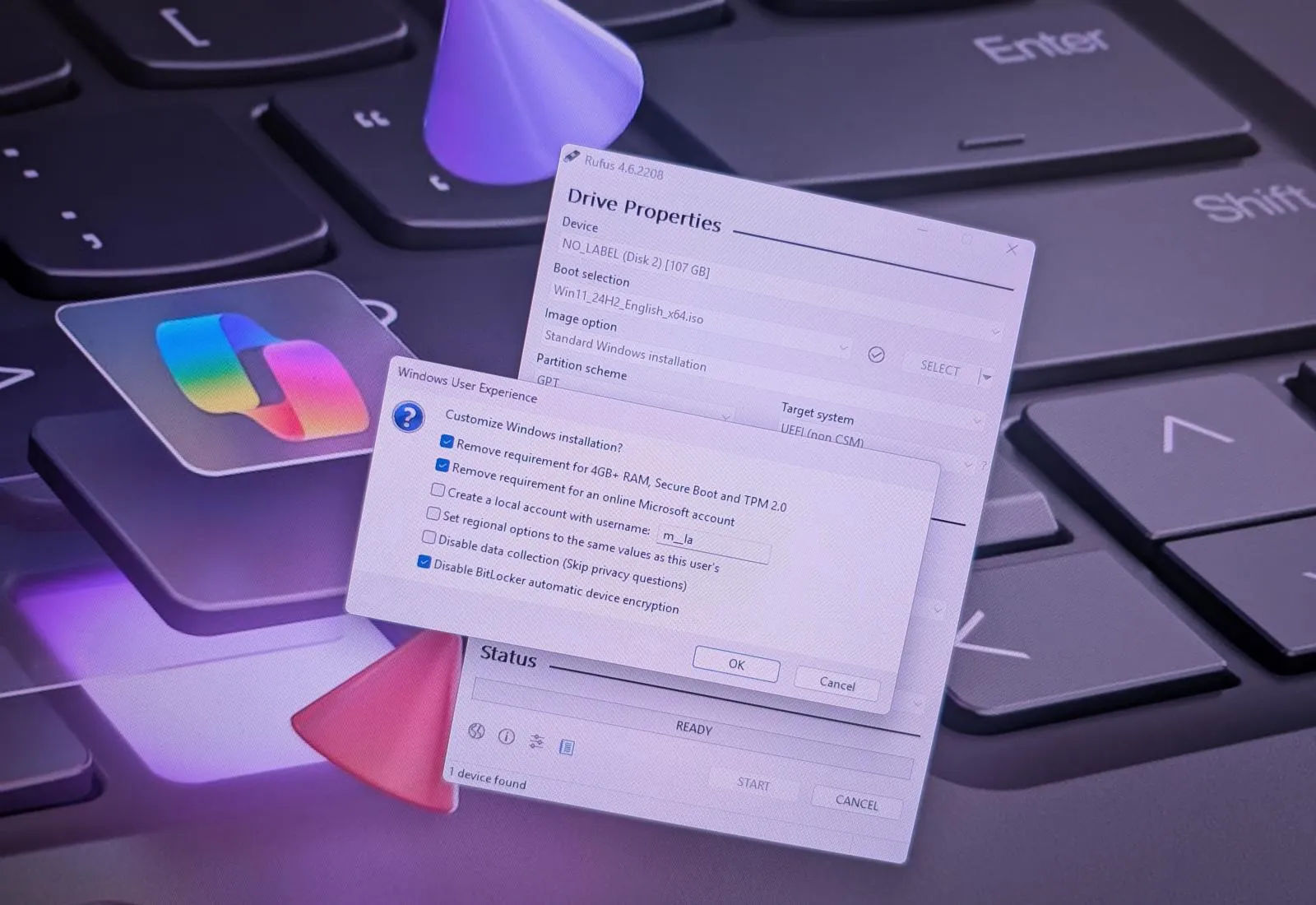How to create Windows 11 bootable USB to bypass requirements with Rufus

UPDATED 10/29/2024: On Rufus, you can create a Windows 11 bootable USB that bypasses the TPM 2.0, Secure Boot, and memory requirements on unsupported hardware. In addition, you can use the tool to create a custom installation media that bypasses the internet and the Microsoft account requirements. You can even prevent the system from enabling BitLocker or Device Encryption automatically, and in this guide, I will teach you how to complete this configuration.
Although you can use the Media Creation Tool, Rufus makes it easier to create a USB flash drive to install Windows 11 since you can provide an existing ISO file or download the files directly from Microsoft. Furthermore, the tool now includes some configuration settings that allow you to bypass the system requirements during a clean install and in-place upgrade.
In this guide, I’ll teach you the steps to use Rufus to create a bootable media to install Windows 11.
Create Windows 11 bootable USB with requirement bypass
To create a Windows 11 bootable USB to bypass system requirements, connect a USB flash drive of at least 8GB and use these steps:
-
Click the link to download the latest version of the tool on your computer under the “Download” section.
-
Right-click the executable and choose the Open option to launch the tool.
-
Choose the USB flash drive from the “Device” setting.
-
Click the Select button.
-
Select the Windows 11 ISO file.
-
Click the Open button.
-
Select the “Standard Windows Partition” option in the “Image option” setting.
-
Select the GPT option in the “Partition scheme” setting.
-
Select the UEFI (non CSM) option in the “Target system” setting.
-
Under the “Volume label” section, specify a descriptive name for the Windows 11 bootable USB flash drive – For example, Windows 11 Bypass.
-
Use the default settings for the File system and Cluster size options.
-
Check the Quick format option.
-
Check the “Create extended label and icon files” option.
-
Click the Start button.
-
Check the “Remove requirement for 4GB+ RAM, Secure Boot and TPM 2.0” option to bypass hardware requirements.

-
Check the “Remove requirement for an online Microsoft account” option to bypass the internet requirement and create a local account.
-
Check the “Create a local account with username” option and specify an account name to create a local account automatically, bypassing this part of the setup.
-
(Optional) Check the “Disable BitLocker automatic device encryption” option to prevent the setup from enabling BitLocker during the installation.
-
Click the OK button.
Once you complete the steps, Rufus will create a bootable USB media that bypasses the requirement to upgrade or install a fresh copy of Windows 11 on unsupported hardware.
It’s important to note that you need to download version 4.6 or higher if you want to create a custom USB media that bypasses the hardware requirements if you plan to perform an in-place upgrade.
Update October 29, 2024: This guide has been updated to ensure accuracy and reflect changes to the process.
Why You Can Trust Pureinfotech
The author combines expert insights with user-centric guidance, rigorously researching and testing to ensure you receive trustworthy, easy-to-follow tech guides. Review the publishing process.
Source link











